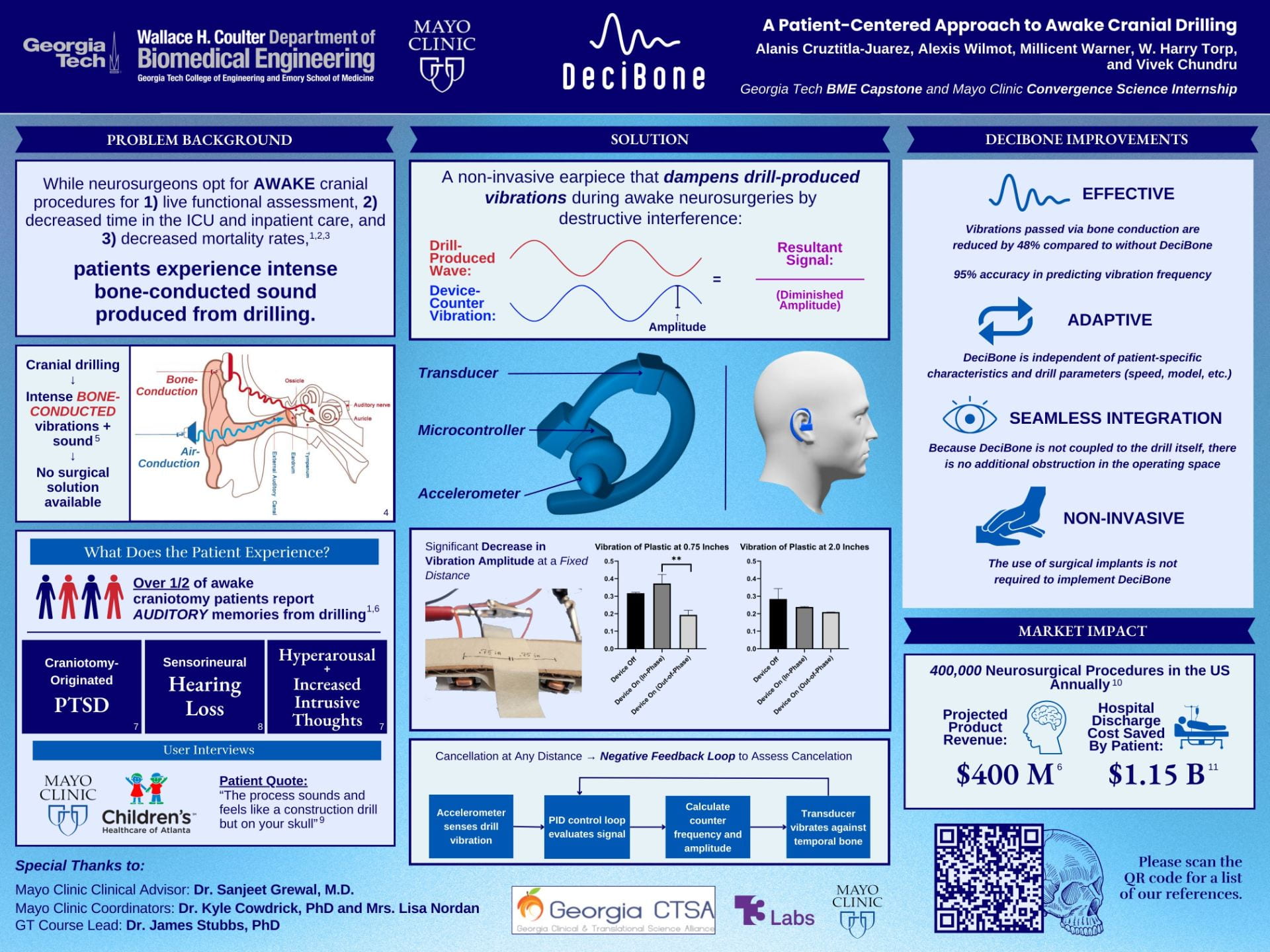Get to know our team on LinkedIN:
Millicent Warner, Alanis Cruztitla-Juarez, Alexis Wilmot, W. Harry Torp, Vivek Chundru
DeciBones
Earpiece To Dampen Bone-Conducted Vibrations During Awake Neurosurgery Drilling
A prototype of an active noise cancellation system for bone-conducted noise. The image shows an accelerometer to measure vibrations from a drill. In addition, there is an amplifier and a bone-conduction transducer to vibrate based on the nature of the incoming signal. The microcontroller carries out relevant signal processing, control calculations, and drives the transducer.
Project Description:
In the US, there are 400,000 neurosurgeries annually, and neurosurgeons are increasingly opting for awake cranial procedures due to improved patient outcomes compared to traditional general anesthesia. However, during the drilling of a craniotomy, patients experience intense bone-conducted sound traveling through their skull and ears, potentially inducing psychological trauma and hearing loss. To address this, we propose an active noise-cancellation earpiece for bone-conducted sound. This system detects the transient bone-conducted sound emanating from the drill using a sensor in the inner ear and dynamically outputs an inverse signal to dampen drill-produced vibrations with a transducer located on the temporal bone. As an initial proof of concept, we utilized a bone-conduction transducer to simulate a drill’s vibrations. With 0.75 inches between the “drill” and our device, there was a 48% reduction in vibrations from the “drill” after applying the device. However, as distance increased, this reduction was not significant. The signal our device outputs has two main properties: frequency and amplitude. This requires our device to accurately measure the frequency of a vibration input and control amplitude. This is done using a microcontroller and accelerometer. Frequency estimation was verified by producing a vibration of known frequency and comparing it to the measured value from our device. Our device is 95% accurate in doing so. Additionally, a PID controller is used to evaluate the amplitude of the vibration and to suggest a new amplitude to drive the amplitude to zero. Preliminary testing showed our PID controller increasing output amplitude when vibration decreases, and vice versa, but further testing is required to quantify efficacy. Existing devices leverage bone-conducted sound for communication without impairing situational awareness and conductive hearing loss treatment. However, these devices either contain a bone-conducted input or a bone-conducted output. No product has both, thus making our solution novel. Future work will include additional validation of both components of the control loop, testing the device on a human cadaver head, and developing a simulation to characterize the vibrations of the drill and device.



